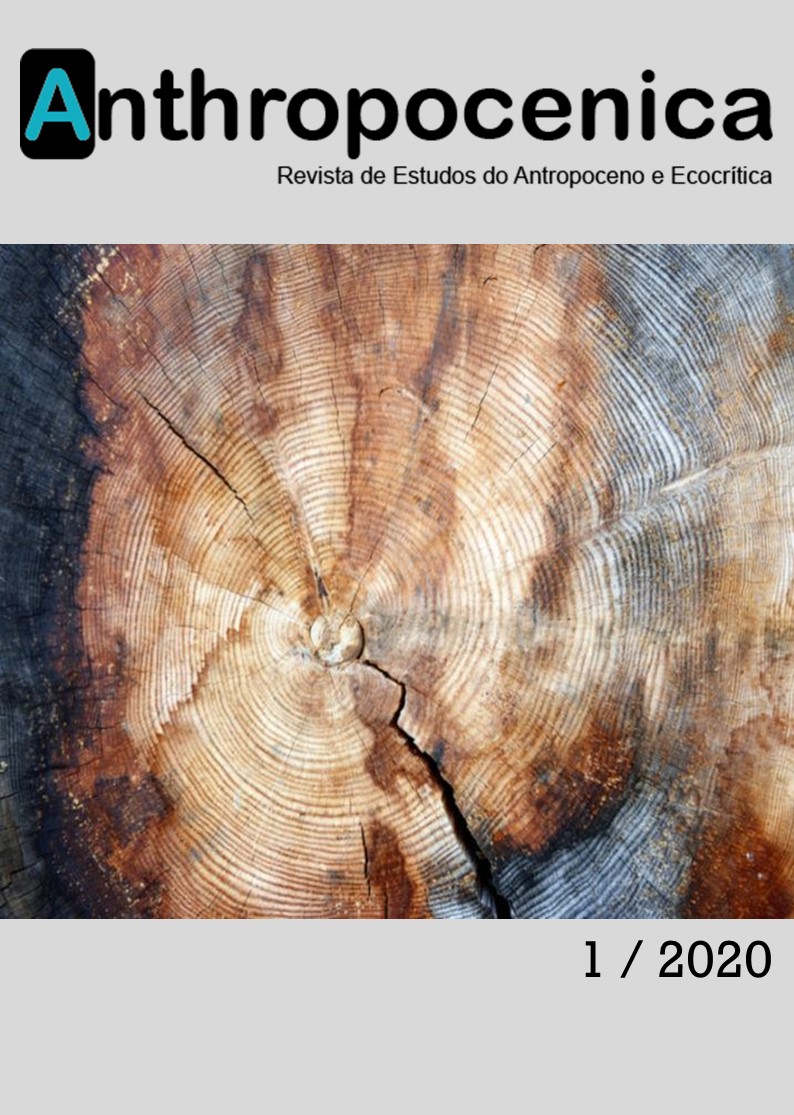A moderna expansão humana e a (re)descoberta do invisível: uma leitura geográfica da pandemia
DOI:
https://doi.org/10.21814/anthropocenica.3090Resumen
A pandemia do COVID19 em que o mundo mergulhou acentua a necessidade reflexão sobre o papel do ser humano na disrupção a que assistimos na vida do nosso planeta. Tendo como pano de fundo o debate sobre uma nova Era geológica marcada pela ação do Homem – o Antropoceno – e o seu papel transformador sobre o planeta, incorporamos uma perspetiva geográfica na análise dos elementos potenciadores da eclosão de epidemias/pandemias. Fatores como o crescimento demográfico e a urbanização, as alterações climáticas e o seu impacto transversal no planeta e na sociedade, a desflorestação e a perda de biodiversidade, as redes de transporte e a mobilidade são elementos considerados como (co)responsáveis pela pandemia e multiplicadores de situações de crises futuras.
Descargas
Citas
Barber, C. P., Cochrane, M. A., Souza, C. M., & Laurance, W. F. (2014). Roads, deforestation, and the mitigating effect of protected areas in the Amazon. Biological Conservation, 177: pp. 203-209.
Bolay, J. (2020). Urban Planning Against Poverty: how to think and do better cities in the global south. Cham, Switzerland: Springer Open.
Carvão, S. (2009). Tendências do turismo internacional. Exedra, pp. 17-32. http://www.exedrajournal.com/docs/S-tur/02-Sandra-Carvao-32.pdf
Crawford, D. H. (2007). Deadly Companions - How microbes shaped our history (1st ed.). Oxford: Oxford University Press.
Daszak, P. (2020, July 28). We are entering an era of pandemics – it will end only when we protect the rainforest. The Guardian. https://www.theguardian.com/commentisfree/2020/jul/28/pandemic-era-rainforest-deforestation-exploitation-wildlife-disease
Di Justo, P. (2009, April 28). The Last Great Swine Flu Epidemic. Salon. http://www.salon.com/2009/04/28/1976_swine_flu/
FAO and UNEP. (2020). Forests, biodiversity and people.
Jones, K. E., Patel, N. G., Levy, M. A., Storeygard, A., Balk, D., Gittleman, J. L., & Daszak, P. (2008). Global trends in emerging infectious diseases. Nature, 451(7181), pp. 990-993.
Kaufmann, R. K., Seto, K. C., Schneider, A., Liu, Z., Zhou, L., & Wang, W. (2007). Climate response to rapid urban growth: Evidence of a human-induced precipitation deficit. Journal of Climate, 20(10), pp. 2299-2306.
Mendes, R. P. (2015). As Cidades Africanas (1a). Lisboa: Chiado Editora.
Micklin, P. (2007). The Aral Sea Disaster. Annual Review of Earth and Planetary Sciences, 35(1), pp. 47-72.
Oppong, J. R. (2010a). Medical geography of Sub-Saharan Africa. In S.A. Attoh (Ed.), Geography of SubSaharan Africa (pp. 333-365). New York: Prentice Hall.
Oppong, J. R. (2010b). Pandemics and Global Health. New York: Infobase Publishing.
Quammen, D. (2012). Spillover: Animal Infections and the Next Human Pandemic (1st ed.). New York: W. W. Norton.
Revich, B. A., & Podolnaya, M. A. (2011). Global Health Action Thawing of permafrost may disturb historic cattle burial grounds in East Siberia. Global Health Action, 4(1), p. 8482.
Sathler, D., Adamo, S. B., & Lima, E. E. C. (2018). Deforestation and local sustainable development in Brazilian Legal Amazonia: An exploratory analysis. Ecology and Society, 23(2): art. 30.
Seto, K. C., Golden, J. S., Alberti, M., & Turner, B. L. (2017). Sustainability in an urbanizing planet. Proceedings of the National Academy of Sciences of the United States of America, 114(34), pp. 8935–8938).
Stannard, D. E. (1993). American Holocaust: The Conquest of the New World. Oxford: Oxford University Press.
Thomas, N., & Nigam, S. (2018). Twentieth-century climate change over Africa: Seasonal hydroclimate trends and sahara desert expansion. Journal of Climate, 31(9), pp. 3349–3370.
Tollefson, J. (2020). Why deforestation and extinctions make pandemics more likely. Nature, 584, pp. 175-176.
United Nations (2019). Growing at a slower pace, world population is expected to reach 9.7 billion in 2050 and could peak at nearly 11 billion around 2100 | UN DESA | United Nations Department of Economic and Social Affairs. UN. https://www.un.org/development/desa/en/news/population/world-population-prospects-2019.html
World Health Organization. (2020). Coronavirus disease 2019 (COVID-19) Situation Report-94 HIGHLIGHTS. https://www.who.int/docs/default-source/coronaviruse/situation-reports/20200423-sitrep-94-covid-19.pdf
Wuthnow, R. (2010). Be Very Afraid: The Cultural Response to Terror, Pandemics, Environmental Devastation, Nuclear Annihilation, and Other Threats. Oxford: Oxford University Press.




